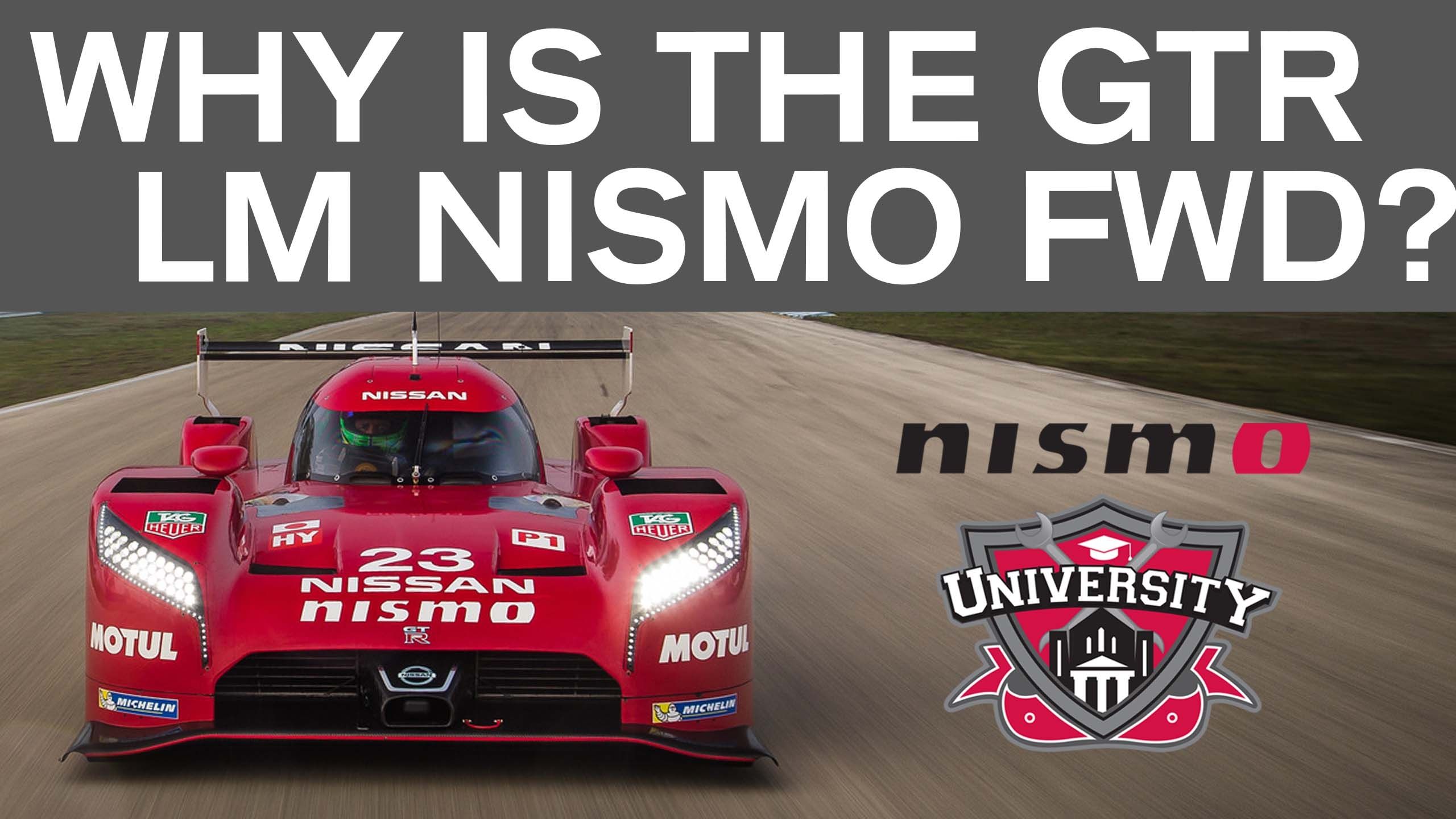You’d be excused for thinking Ben Bowlby is utterly and incurably insane. After all, he’s the same brain behind the Nissan Zeod RC and the All American Racers DeltaWing, both of which shocked the racing->ke447 world with designs that are as orthodox as bringing Grandma to the strip club. His latest unconventional creation is the wild-looking 2015 GT-R LM Nismo, a prototype hybrid->ke147 racer with aspirations to compete (and win) at Le Mans.->ke1591 Sure, it looks outrageous, but the craziest thing about this car is the front-wheel-drive powertrain that lies underneath. What, then, is the method behind the madness? This three-and-a-half minute video->ke278 seeks to explain.
Now, I just want to state at the off that I have nothing against FWD, at least in principle. In fact, some of my favorite cars use the front wheels for turning, stopping, and going (the Civic->ke236 and Integra->ke1527 Type-R both come to mind), and there are tons of successful FWD race cars->ke148 out there (just look to the world of rally for examples). But when it comes to competing in LM P1, one of the most cutthroat racing categories in the world, I don’t think I’m alone in having doubts about the efficacy of FWD.
Not so with Bowlby’s team. They are completely transparent about the advantages they expect to gain from using a FWD platform, so hit play or read on to learn more.
Continue reading for the full story.
Justifications for FWD
“Traditionally, race cars became rear-engine, rear-wheel drive for benefits of traction and packaging,” Bowlby explains in the video. It’s all common knowledge, so what’s the point of an FF platform? GT Academy-winner Jann Mardenborough explains: “The reason for us going front-engined is that we have a very long bonnet and that means we can maximize our surface area for downforce. We try to get as much downforce on the car as possible to make us go faster through the corners. Also you need a streamlined car so you’re very efficient in a straight line.”
That makes sense given the track layout at the Circuit de la Sarthe, which incorporates ridiculously long straights that stretch a car’s top end to the absolute limit. Just a few extra mph can translate into huge positional gains.
“You have extremely high speed, and then you have to slow the car right down for the turns,” Bowlby elaborates.
Of course, there are drawbacks, as described by LM P1 driver and Nismo Athlete Alex Buncombe: “The main difference with the front-wheel drive is the feeling of the car in a slow-speed corner, it just wants to push the car to the outside of the track, so you do get understeer in the car.”
Bowlby plans to tackle this challenge with aero settings and advanced traction control. He also points out that with so much of the car’s weight pushed forward, a spin is less likely. Efficiency is also improved, an important attribute in endurance racing: “That could be a strength come hour 23, for instance,” says Buncombe.
At the end of the day, Bowlby and his team are fully aware they are in uncharted territory: “We’re certainly pushing on the boundaries of people’s expectations and beliefs of what a Le Mans car is and what can be fast. If we’re right, it will show a different solution entirely can be competitive.”
2015 Nissan GT-R LM Nismo
Nissan has made numerous attempts at winning the prestigious 24 Hours of Le Mans, the first in 1986. So far, best results came in 1998 with a third-place podium from the #32 R390 GT1 car. Now, after 16 years away from the sport, Nissan is back with the GT-R LM Nismo.
Most noteworthy is the twin-turbo 3.0-liter V-6 stuffed under that bulbous nose, which is mated to an energy reclamation system for 1,250 electrified horsepower. Routing this to the front wheels is a five-speed sequential gearbox.
So far, the GT-R LM Nismo has withdrawn from the first two races in the FIA World Endurance Championship, with performance issues from the hybrid system and difficulties in testing speculated to be the problem. Nissan says the car will make its competition debut this June at the 24 Hours of Le Mans, but the question remains – will FWD be the way forward, or will the nail that stands out get hammered?
Read our full review here.

